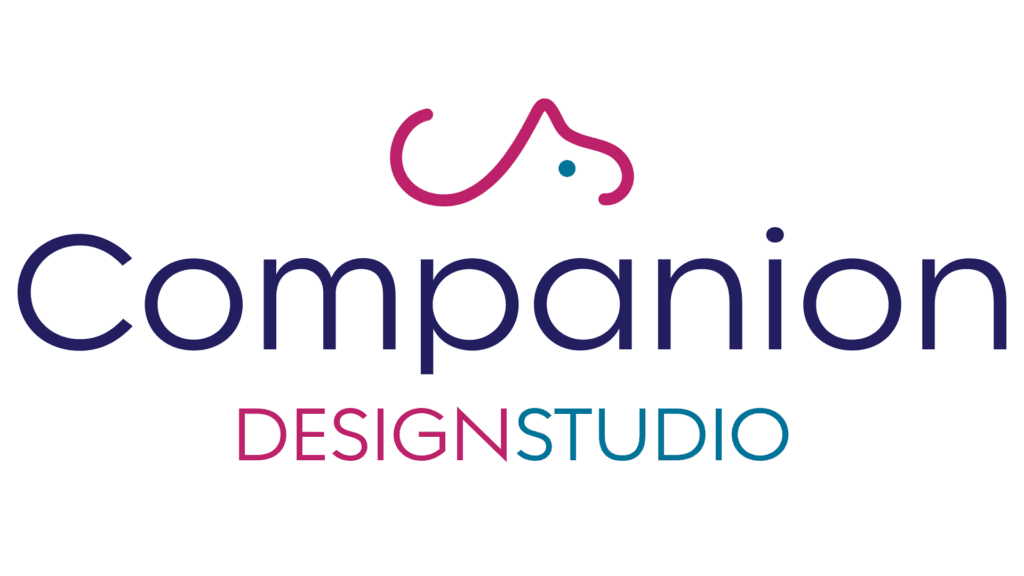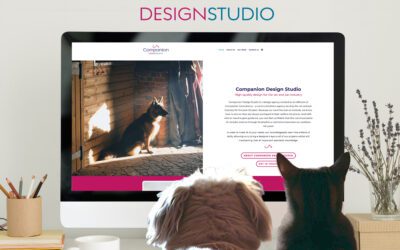When creating designs with the veterinary and pet health sector in mind, there is much more to consider than simply the design basics. In order to produce truly effective, factually accurate designs, it is crucial to consider some of the most recent changes to the veterinary and pet sector as a whole. Read on to learn nine key veterinary trends in 2023, and how you can align your design strategy to keep up with them.
1. Corporate owned practices
Recently, more and more vet practices are becoming corporate owned. Earlier this year, it was estimated that around 75% of speciality veterinary practices were corporate owned.. Large corporate organisations often employ in-house marketing departments, and these teams tend to adopt a very professional approach to branding, using brand guidelines very consistently across all relevant materials and branches.
Independently owned practices need to aspire to the same level of professionalism in design and branding in order to compete. However, they also need to stand out from their other independent competitors. Creating something different and distinctive might involve some more lateral thinking – logos incorporating animal silhouettes, paws and hearts are used extensively in this sector and so may be less memorable as a result.
2. Humanisation of pets
Another trend that shows no signs of slowing in 2023 is the humanisation of pets. Pet owners are increasingly seeking out responsible and well-informed brands that understand their pet is ‘family’. It means that they will be looking to brands to demonstrate an understanding of the love they feel for pets, not necessarily in a hackneyed way but in a way that shows some level of realism – dogs can roll in mud, cats can knock vases off the table, but we still love them!
3. Increasing technology
The increase in technology is not a trend that is exclusive to 2023. However, now more than ever, we are seeing a clear depreciation in people’s attention spans as a result of so much screen time. It is estimated that the average human attention span sits at just over eight seconds[2]. Therefore, when it comes to design and marketing in the veterinary sector, it is important to ensure that information is instantly appealing to users, to make sure that interest is held. This is particularly important for videos, animations, or even podcasts.
When it comes to explaining complex information around veterinary products or procedures, this presents a challenge. At CDS our vets and designers work in collaboration to work out the best way to explain concepts accurately and simply in a way that appeals to the target audience.

4. Everybody is an expert
Additionally, due to the increase of technology and information available at a person’s fingertips, there is more information readily available to users than ever before. While having so much information can be useful in many ways, this can also create a culture where people believe that they are ‘experts’ on a subject because they have found so much information online.
Having ensured they are educated about their pet’s needs, many pet owners will be ready to call out brands that use imagery that is detrimental to animal welfare, such as dogs with sticks, cats with lilies or a rabbit and a guinea pig in the same hutch – all are big no-nos. Therefore, creating veterinary designs that take these considerations into account (or employing a design agency with the understanding to assist you with this) is a must!
5. Natural and sustainable products and services
There is an increasing level of awareness around sustainability. In fact, products marketed as sustainable grew 2.7 times faster than those that were not[3].
This can easily translate to the world of veterinary design too. When planning a veterinary design project for your business, consider things such as your mediums (can you use more digital design as opposed to printed in order to save resources?), colour palettes (sustainability is often associated with greens and blues), and typography (such as using softer fonts).
6. Building trust and credibility
As more businesses emerge and offer their own unique selling points, consumers are presented with more options to choose between when they are in need of a product or service. But consumers also remain wary and may experience a level of cynicism when it comes to brands. No one wants to entrust the health of their much-loved pet or high-performance dairy cow to a less than credible service or product provider.
Look at consistency when it comes to using any certification badges or emblems on designs and marketing materials which can help to show customers that a business is skilled and reputable. They help to build trust in a world where scamming and phishing are commonplace.
Quality in execution of design and print, website functionality and the content you post on social media can all play an important part in building trust. Consider how you might feel if you received a leaflet from a high-end brand that contained lots of spelling mistakes, badly printed on flimsy paper. Authenticity is everything!
7. Personalisation
Whether consciously or subconsciously, we are all exposed to masses of marketing. More specifically, the average person is exposed to more than 70 ads or marketing messages per day[4]. Therefore, it can be challenging to stand out in the world of paws, hearts, and cute cats without taking the time to appeal to the customer on a more personal level.
Personalisation can be harnessed on both a brand and customer basis. Including a customer’s first name (or their pet’s) on designs specifically made for them, or addressing them personally in some way can help them to relate more to your brand, and allows you to come across as more personable as a business. Additionally, including the name of an individual at your company, rather than just simply your business name, can close the distance between customer and business, which can encourage users to reach out with questions and eventually convert. Consider showing original images of people at work – especially when that may take place behind the scenes away from the public gaze. Most of us don’t just work in an animal business, we also work in people businesses.
8. Globalisation
As technology develops, so does the ease of accessing digital design materials across the globe. With pet owners and vets being located in all parts of the world, it is becoming increasingly important that images and other forms of veterinary design are translatable and can be easily understood in a number of countries or cultures.
For example, design elements such as signs and symbols should make sense to a variety of people if you are aiming for global reach with your design. The choice of language should also be appropriate for translation, so it is important to avoid typically British slang and idioms that may affect the meaning in other places. It is also important to consider cultural beliefs associated with animals and ensure that any designs are inclusive and inoffensive to these cultures.
Icons can be really useful to show features and benefits of products, infographics can make statistics more memorable and help them to stand out and an animation can tell a story without using words.
9. The need for mobile friendly content
To cater to the busy lives of pet owners, the veterinary sector is generally adopting the growing trend of mobile friendly content. According to one survey, 92.3 percent of internet users access the internet using a mobile phone[5]. Because of this, there is a growing need for content to be easily accessible and digestible on the go, whether users are commuting, multi-tasking or simply do not have access to sit down at a computer. Vets in developing countries or working on-farm or in livery yards are reliant on mobile so design needs to match their needs.
One powerful medium that is rapidly rising for content sharing is podcasts – which are also great for busy professionals on the move. According to one report, the number of podcast listeners worldwide will grow to over 465 million in 2023[6]. The convenience of podcasts being a hands-free method of taking in information means that it is becoming very popular, and many veterinary and pet health companies are beginning to jump on the bandwagon.
In conclusion, the needs and concerns of animal owners and professionals are changing rapidly so the way in which veterinary and pet health businesses conduct their marketing and design services should be dynamic in order to fit in with these changes.
Need an extra hand with your veterinary design? Contact us today and speak with a member of our experienced team of vets and designers to find out how we can help to bring your project to life, while always keeping you at the forefront of the latest trends.
[1] https://observer.com/2023/03/veterinary-practices-are-increasingly-corporately-owned-and-pets-owners-pay-the-price (Accessed: 16/6/23)
[2] https://www.thetreetop.com/statistics/average-human-attention-span (Accessed 12/6/23)
[3] https://theroundup.org/environmentally-conscious-consumer-statistics (Accessed 13/6/23)
[4] https://www.thedrum.com/news/2023/05/03/how-many-ads-do-we-really-see-day-spoiler-it-s-not-10000 (accessed 13/6/23)
[5] https://explodingtopics.com/blog/mobile-internet-traffic (Accessed 13/6/23)
[6] https://podcastle.ai/blog/top-podcasting-trends/ (Accessed 13/6/23)




